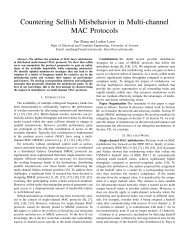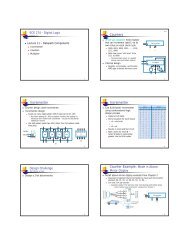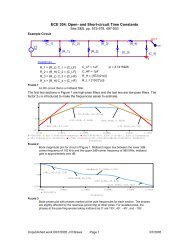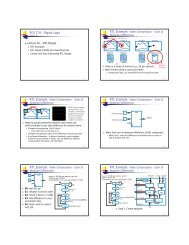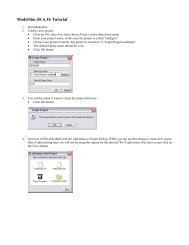Create successful ePaper yourself
Turn your PDF publications into a flip-book with our unique Google optimized e-Paper software.
a) b)<br />
qij(b)<br />
fj<br />
ci<br />
rji(b)<br />
qij(b)<br />
fj<br />
ci<br />
yi<br />
rji(b)<br />
Figure 2: a) illustrates the calculation of rji(b) and b) qij(b)<br />
2. The check nodes calculate their response messages rji: 2<br />
and<br />
rji(0) = 1 1<br />
+<br />
2 2<br />
�<br />
i ′ ɛ Vj\i<br />
(1 − 2qi ′ j(1)) (3)<br />
rji(1) = 1 − rji(0) (4)<br />
So they calculate the probability that there is an even number<br />
of 1’s amoung the variable nodes except ci (this is exactly what<br />
Vj\i means). This propability is equal to the probability rji(0)<br />
that ci is a 0. This step and the information used to calculate<br />
the responses is illustrated in figure 2.<br />
fj → ci<br />
3. The variable nodes update their response messages to the check<br />
nodes. This is done according to the following equations,<br />
ci → fj<br />
qij(0) = Kij (1 − Pi) �<br />
rj ′ i(0) (5)<br />
qij(1) = KijPi<br />
�<br />
j ′ ɛ Ci\j<br />
j ′ ɛ Ci\j<br />
rj ′ i(1) (6)<br />
2 Equation 3 uses the following result from Gallager: for a sequence of M<br />
independent binary digits ai with an propability of pi for ai = 1, the probability<br />
that the whole sequence contains an even number of 1’s is<br />
1 1<br />
+<br />
2 2<br />
M�<br />
(1 − 2pi) (2)<br />
i=1<br />
7



